It looks like you're using an Ad Blocker.
Please white-list or disable AboveTopSecret.com in your ad-blocking tool.
Thank you.
Some features of ATS will be disabled while you continue to use an ad-blocker.
share:
You may think you recognize her but you most certainly mo longer understand her, the Great Dragon Mother, ancestral Goddess of the Indo-Europeans, to
most she would simply be seen as a Mermaid as this Scythian example is generally interpreted in popular culture, but it was not always thus.
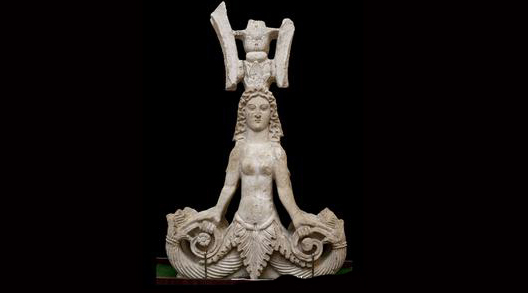
The core region for this Goddess is South Eastern Europe and best known from Scythian art, but she also formed the basis for the Celtic art style and Hellenic as it emerged from the Balkans;

Thus the influence of her culy can be seen to have extended over all of Europe, though until the classical period the Northern Europeans did not represent their Deities only demonstrating their interests through the abstract and with good reason as the principles involved were complex Argimpasa or Apatourou as the Scythians named her represented the transformative power of nature, through water, the vegetal, the animal, even to the extent of the ariael, a veritable Mother Nature but by no means benign.
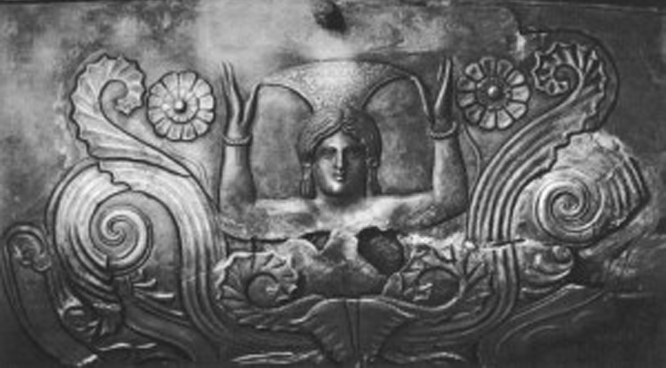
There is an essential Dualism involved in her iconography that would relate to her association with birth and death, the Triple Goddess cult derivative of this but Api-Ge in her aspect of Gaia, Mother Earth contained such in the singular,, in her aspect as a Death Goddess she was dread.
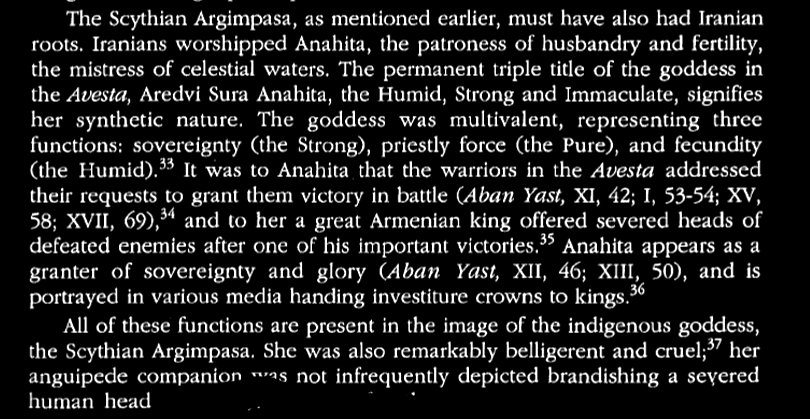
So the Scythians would dedicate the blood and severed heads of their enemies to their ancestral Mother and she was happy enough to receive them, it's certainly the case that the further her cult moved from the core region the tamer it became, the Greeks identified her with Aphrodite Ourania, thus born from the severed testicles of Uranus, as well as Medusa Goddess of dread that could drain all life.

So she was quite a complex character to represent.
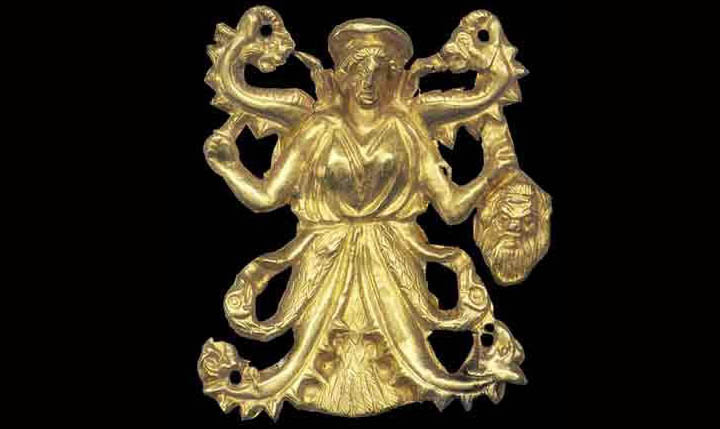
Aphrodite Ourania could be associated with military success however, retaining the sense of a primary archetype;

Probably her best know associations are with the Syrian Goddess Derceto and Atargatis, in terms of the mermaid and her associations with love as the positie side of her nature.
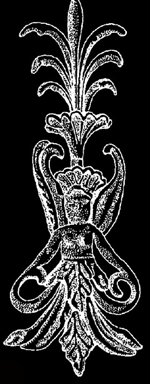 But also aspects of her cult translated to Southern Mesopotamia and the cult of
Nanse, born on the foam of the waves like Aphrodite, and concerned with equal distribution and inclusivity within society, related to the idea of the
common source, within that culture her aspoects had been sub-diviided such that for example Ninhursag would represent her association with the
vegetal, Inanna with human sexualkity, it removed seeming contradictions.
But also aspects of her cult translated to Southern Mesopotamia and the cult of
Nanse, born on the foam of the waves like Aphrodite, and concerned with equal distribution and inclusivity within society, related to the idea of the
common source, within that culture her aspoects had been sub-diviided such that for example Ninhursag would represent her association with the
vegetal, Inanna with human sexualkity, it removed seeming contradictions.
What the Sumerians did have in common with the Scythians was that the King ruled as her chosen representative, in Sumeria this was Dumuzid that held the title 'Great Dragon Mother', were the Dragon was Urash the personification of the Earth, a strong element in early Sumerian tradition but the importance of Urash diminished, it seems certain she once held prominence in the same way as the Scythian Goddess as many Deities were descended from her relationship with Anu, and wad understood as a dragon from the earliest records.
The Kingship in the Scythian tradition generally involved lakes and mysterious Ladies, as in A Scythian Royal Legend from Uddiyana, it was the same in Britain through Sarmatian influence, the hero receives a sword that makes him the champion of nature, it was the same with Freyr in the Nordic tradition.
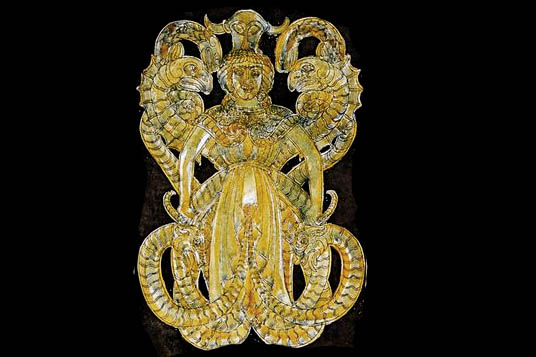
What needs to be the most appreciated about this Goddess is that technically speaking she is the only one that exists, all others being derivative spiritual phenomena, she is existence and her core reality as the Dragon is pure energy, fire, she's certainly the only one i've ever met in her multifarious aspects, the Goddess of the Tendril, the one that puts out feelers, as the Goddess of sleep paralysis and dream prophecy, the contact from within one's very being.
The snake and tendril limbed Goddess
Aphrodite Ourania of the Bosporus

The core region for this Goddess is South Eastern Europe and best known from Scythian art, but she also formed the basis for the Celtic art style and Hellenic as it emerged from the Balkans;

Thus the influence of her culy can be seen to have extended over all of Europe, though until the classical period the Northern Europeans did not represent their Deities only demonstrating their interests through the abstract and with good reason as the principles involved were complex Argimpasa or Apatourou as the Scythians named her represented the transformative power of nature, through water, the vegetal, the animal, even to the extent of the ariael, a veritable Mother Nature but by no means benign.

There is an essential Dualism involved in her iconography that would relate to her association with birth and death, the Triple Goddess cult derivative of this but Api-Ge in her aspect of Gaia, Mother Earth contained such in the singular,, in her aspect as a Death Goddess she was dread.

So the Scythians would dedicate the blood and severed heads of their enemies to their ancestral Mother and she was happy enough to receive them, it's certainly the case that the further her cult moved from the core region the tamer it became, the Greeks identified her with Aphrodite Ourania, thus born from the severed testicles of Uranus, as well as Medusa Goddess of dread that could drain all life.

So she was quite a complex character to represent.

Aphrodite Ourania could be associated with military success however, retaining the sense of a primary archetype;

Probably her best know associations are with the Syrian Goddess Derceto and Atargatis, in terms of the mermaid and her associations with love as the positie side of her nature.
 But also aspects of her cult translated to Southern Mesopotamia and the cult of
Nanse, born on the foam of the waves like Aphrodite, and concerned with equal distribution and inclusivity within society, related to the idea of the
common source, within that culture her aspoects had been sub-diviided such that for example Ninhursag would represent her association with the
vegetal, Inanna with human sexualkity, it removed seeming contradictions.
But also aspects of her cult translated to Southern Mesopotamia and the cult of
Nanse, born on the foam of the waves like Aphrodite, and concerned with equal distribution and inclusivity within society, related to the idea of the
common source, within that culture her aspoects had been sub-diviided such that for example Ninhursag would represent her association with the
vegetal, Inanna with human sexualkity, it removed seeming contradictions. What the Sumerians did have in common with the Scythians was that the King ruled as her chosen representative, in Sumeria this was Dumuzid that held the title 'Great Dragon Mother', were the Dragon was Urash the personification of the Earth, a strong element in early Sumerian tradition but the importance of Urash diminished, it seems certain she once held prominence in the same way as the Scythian Goddess as many Deities were descended from her relationship with Anu, and wad understood as a dragon from the earliest records.
The Kingship in the Scythian tradition generally involved lakes and mysterious Ladies, as in A Scythian Royal Legend from Uddiyana, it was the same in Britain through Sarmatian influence, the hero receives a sword that makes him the champion of nature, it was the same with Freyr in the Nordic tradition.

What needs to be the most appreciated about this Goddess is that technically speaking she is the only one that exists, all others being derivative spiritual phenomena, she is existence and her core reality as the Dragon is pure energy, fire, she's certainly the only one i've ever met in her multifarious aspects, the Goddess of the Tendril, the one that puts out feelers, as the Goddess of sleep paralysis and dream prophecy, the contact from within one's very being.
The snake and tendril limbed Goddess
Aphrodite Ourania of the Bosporus
edit on Kam1130320vAmerica/ChicagoTuesday1730 by Kantzveldt because: (no reason given)
a reply to: skunkape23
Yes reject the force within at your peril, but there are interesting connections to the Yin-Yang symbolism, this is from Vinca culture 6,500 years ago;
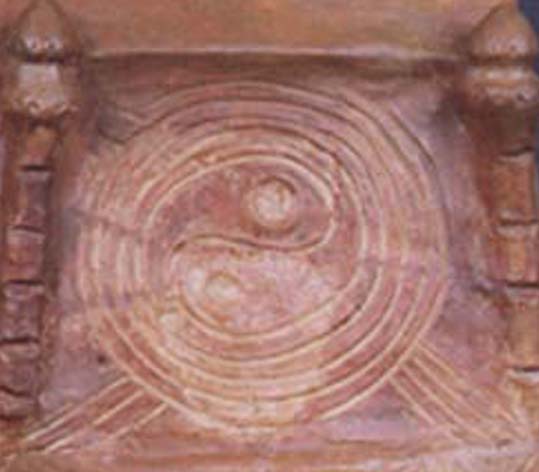
That's the culture i would expect what i outlined to have originated from in the region of Serbia and Transylvania, but of course there is also the parallel far Eastern tradition, probably of common inspiration but not necessarily through normative cultural transmission, in the same sense that Meso-American related traditions are unlikely to have been.
a reply to: ElOmen
Yes Aphrodite Ourania, or Venus if you're a Roman
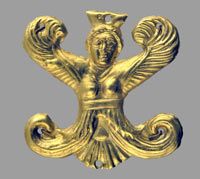
Yes reject the force within at your peril, but there are interesting connections to the Yin-Yang symbolism, this is from Vinca culture 6,500 years ago;

That's the culture i would expect what i outlined to have originated from in the region of Serbia and Transylvania, but of course there is also the parallel far Eastern tradition, probably of common inspiration but not necessarily through normative cultural transmission, in the same sense that Meso-American related traditions are unlikely to have been.
a reply to: ElOmen
Yes Aphrodite Ourania, or Venus if you're a Roman

edit on Kam1130320vAmerica/ChicagoTuesday1730 by Kantzveldt because: (no reason given)
a reply to: Kantzveldt
Awesome thread. I am curious why you (and they) connected her with Nanshe instead of Tiamat, through. I understand the Inanna correlation if only because of the other analogs like Venus and Aphrodite but no Tiamat, a proto goddess associated with dragons.
Awesome thread. I am curious why you (and they) connected her with Nanshe instead of Tiamat, through. I understand the Inanna correlation if only because of the other analogs like Venus and Aphrodite but no Tiamat, a proto goddess associated with dragons.
a reply to: Abysha
It's s good question and reflects historical differences of interpretation and attitude, of course her watery aspect relates to Tiamat but she was understood as defeated in Semitic tradition, the cult of Marduk, and simply used in terms of forming life.
The Southern Mesopotamian tradition which the cult of Marduk subverted sees Enki as an active Masculine spiritual force creating life in conjunction with various Goddesses associate with the various stages of the transformative process, his daughter Nanshe is a final flowering as it were of such development, also his son Dumuzid was one who ruled on behalf of the Great Dragon Mother , and another son Assaluhi practised shamanic healing, so there was natural balance between Masculine and Feminine archetypes.
The Hebrew perspective of course is similar to the Babylonian, defeat the Great Dragon....also worth noting imitation.

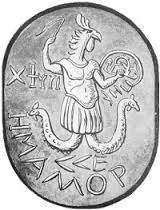
It's s good question and reflects historical differences of interpretation and attitude, of course her watery aspect relates to Tiamat but she was understood as defeated in Semitic tradition, the cult of Marduk, and simply used in terms of forming life.
The Southern Mesopotamian tradition which the cult of Marduk subverted sees Enki as an active Masculine spiritual force creating life in conjunction with various Goddesses associate with the various stages of the transformative process, his daughter Nanshe is a final flowering as it were of such development, also his son Dumuzid was one who ruled on behalf of the Great Dragon Mother , and another son Assaluhi practised shamanic healing, so there was natural balance between Masculine and Feminine archetypes.
The Hebrew perspective of course is similar to the Babylonian, defeat the Great Dragon....also worth noting imitation.


edit on Kam1130320vAmerica/ChicagoTuesday1730 by Kantzveldt because: (no reason given)
a reply to: Marduk
Sometimes it is dragons sometimes serpents, which the Naga tended to be seen as, there is of course a difference and the ones with serpents were perhaps produced by those who didn't believe in dragons which i think predates the later serpent representations, also given actual serpent cults perhaps confusion.
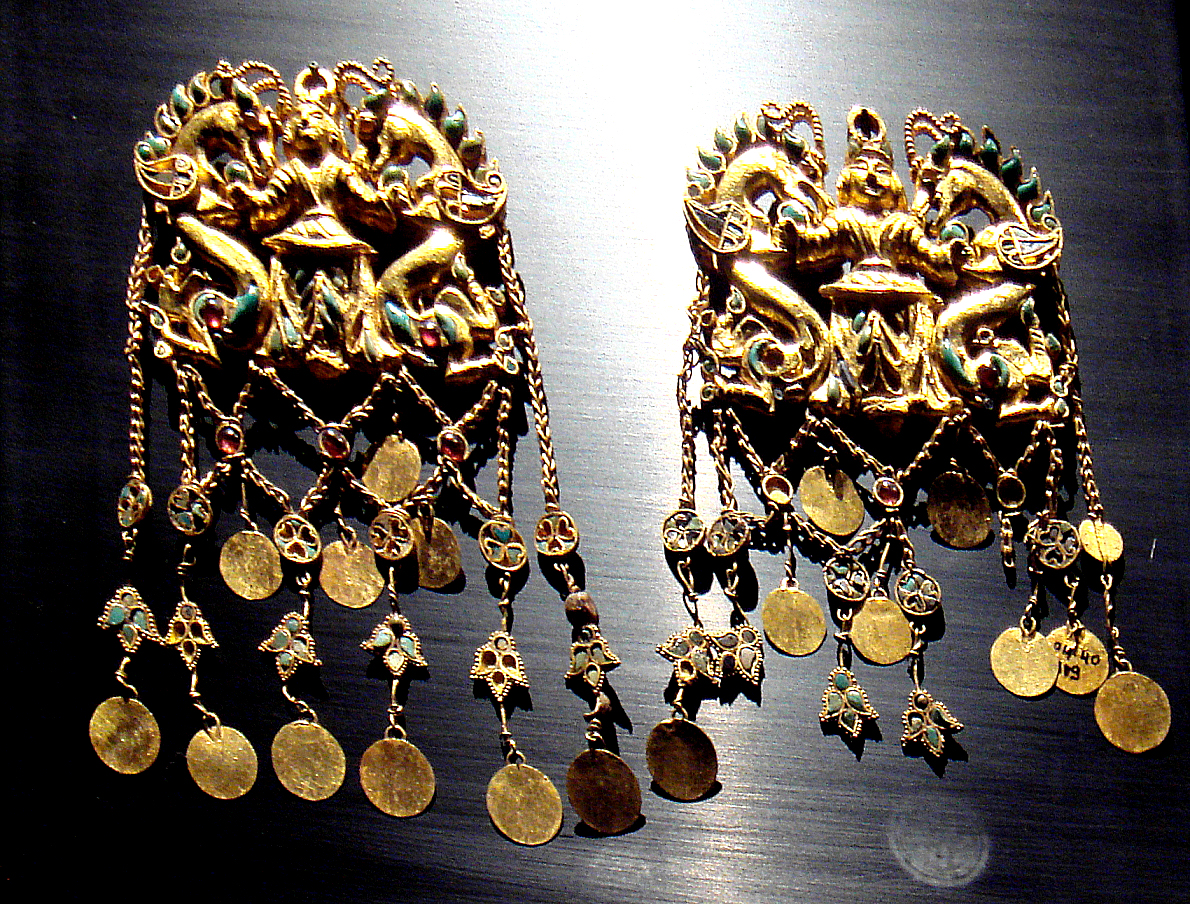
Sometimes it is dragons sometimes serpents, which the Naga tended to be seen as, there is of course a difference and the ones with serpents were perhaps produced by those who didn't believe in dragons which i think predates the later serpent representations, also given actual serpent cults perhaps confusion.

An excellent topic and interesting artifacts, but it did raise some questions in my mind...
As far as I know, the only reference to a 'great dragon mother' in any culture is a reference to Tiamat (en.wikipedia.org...) who only takes the form of a dragon when she is attempting to avenge her husband but is not otherwise shown as a dragon. There are Chinese dragons who are female and queens of their race, but no "great dragon mother."
The myths (Greek) of dragon goddesses are recorded in Greece and date to 500 BC or thereabouts.
The depictions of the goddess are fairly recent (500 BC-ish)... but Celtic art ... there's not a lot of continuity there, if I've read my sources correctly (overview - en.wikipedia.org...) In addition, in looking at your linked sources, they are talking about tomb objects from the 3rd Century AD and onward. Even the Scythians and other sources in the papers only date to the 9th century BC.
This seems far too recent to be a Paleolithic goddess.
The papers, by the way, are quite interesting.
originally posted by: Kantzveldt
You may think you recognize her but you most certainly mo longer understand her, the Great Dragon Mother, ancestral Goddess of the Indo-Europeans, to most she would simply be seen as a Mermaid as this Scythian example is generally interpreted in popular culture, but it was not always thus.
As far as I know, the only reference to a 'great dragon mother' in any culture is a reference to Tiamat (en.wikipedia.org...) who only takes the form of a dragon when she is attempting to avenge her husband but is not otherwise shown as a dragon. There are Chinese dragons who are female and queens of their race, but no "great dragon mother."
The myths (Greek) of dragon goddesses are recorded in Greece and date to 500 BC or thereabouts.
The core region for this Goddess is South Eastern Europe and best known from Scythian art, but she also formed the basis for the Celtic art style and Hellenic as it emerged from the Balkans;
The depictions of the goddess are fairly recent (500 BC-ish)... but Celtic art ... there's not a lot of continuity there, if I've read my sources correctly (overview - en.wikipedia.org...) In addition, in looking at your linked sources, they are talking about tomb objects from the 3rd Century AD and onward. Even the Scythians and other sources in the papers only date to the 9th century BC.
This seems far too recent to be a Paleolithic goddess.
The papers, by the way, are quite interesting.
a reply to: Byrd
What i was basing the Sumerian connection on was a quite common epitaph of Dumuzid as Ama-ucumgal-ana, which literally translates as Mother-Dragon-Heaven (Feminine Ana), a very close association between his Kingship and the Mother Dragon.
Ama-ucumgal-ana competes majestically for you in battle, cutting a swathe like a dragon...
The Mother Dragon in question as i noted was Urash, representative of the plant Earth. she only tended to get mentioned with regards to others sharing her attributes, somewhat marginalized.
Lady of all the divine powers, resplendent light, righteous woman clothed in radiance, beloved of An and Urash! Mistress of heaven, with the great pectoral jewels, who loves the good headdress befitting the office of en priestess, who has seized all seven of its divine powers!
My king, you alone perform the ancient rites, a truly immense task. Ninurta, yellow evening light that casts fear over the Land, like holy Urash, a fearsome dragon brandishing a terrible torch!
God of prosperity born to An and gazed upon by Urash -- Cu-Suen heroic son of An, beloved of Enlil, head held high in the lapis-lazuli E-kur, given birth by Urash, chosen by the heart of Urash, you have been elevated over all the lands.
youthful Utu ...from Urash; brilliant light, great lion, hero emerging from the holy interior of heaven, storm whose splendour covers the Land and is laden with great awesomeness;The great wild bull, youthful Utu, who like a torch illuminates the Land from the holy heavens; the wise one of all the countries, the fearsome radiance of Urash, the just god among the Anuna gods, holy dragon
What i was basing the Sumerian connection on was a quite common epitaph of Dumuzid as Ama-ucumgal-ana, which literally translates as Mother-Dragon-Heaven (Feminine Ana), a very close association between his Kingship and the Mother Dragon.
Ama-ucumgal-ana competes majestically for you in battle, cutting a swathe like a dragon...
The Mother Dragon in question as i noted was Urash, representative of the plant Earth. she only tended to get mentioned with regards to others sharing her attributes, somewhat marginalized.
Lady of all the divine powers, resplendent light, righteous woman clothed in radiance, beloved of An and Urash! Mistress of heaven, with the great pectoral jewels, who loves the good headdress befitting the office of en priestess, who has seized all seven of its divine powers!
My king, you alone perform the ancient rites, a truly immense task. Ninurta, yellow evening light that casts fear over the Land, like holy Urash, a fearsome dragon brandishing a terrible torch!
God of prosperity born to An and gazed upon by Urash -- Cu-Suen heroic son of An, beloved of Enlil, head held high in the lapis-lazuli E-kur, given birth by Urash, chosen by the heart of Urash, you have been elevated over all the lands.
youthful Utu ...from Urash; brilliant light, great lion, hero emerging from the holy interior of heaven, storm whose splendour covers the Land and is laden with great awesomeness;The great wild bull, youthful Utu, who like a torch illuminates the Land from the holy heavens; the wise one of all the countries, the fearsome radiance of Urash, the just god among the Anuna gods, holy dragon
edit on Kam1130320vAmerica/ChicagoTuesday1730 by Kantzveldt because: (no reason given)
edit on
Kpm1130320vAmerica/ChicagoTuesday1730 by Kantzveldt because: (no reason given)
Sorry for interrupting. But, it seems I remember something in my reading of the most ancient gods and goddesses that they had a standing order that
their real image, real physical appearance never be duplicated or documented.
My memory will not serve me in recalling where I found this. But if there were such a directive would it not influence the depictions we see of these figures? Snakes or dragons, or many other depictions actually pointing to the same real entity? In essence, turning themselves from fact to fiction?
My memory will not serve me in recalling where I found this. But if there were such a directive would it not influence the depictions we see of these figures? Snakes or dragons, or many other depictions actually pointing to the same real entity? In essence, turning themselves from fact to fiction?
originally posted by: rajas
a reply to: Kantzveldt
You forgot the modern names
This is where it gets interesting and i would like to know more about this.
originally posted by: Kantzveldt
a reply to: Abysha
It's s good question and reflects historical differences of interpretation and attitude, of course her watery aspect relates to Tiamat but she was understood as defeated in Semitic tradition, the cult of Marduk, and simply used in terms of forming life.
The Southern Mesopotamian tradition which the cult of Marduk subverted sees Enki as an active Masculine spiritual force creating life in conjunction with various Goddesses associate with the various stages of the transformative process, his daughter Nanshe is a final flowering as it were of such development, also his son Dumuzid was one who ruled on behalf of the Great Dragon Mother , and another son Assaluhi practised shamanic healing, so there was natural balance between Masculine and Feminine archetypes.
The Hebrew perspective of course is similar to the Babylonian, defeat the Great Dragon....also worth noting imitation.
Hmm... That's Abraxas - the god of the first sphere where we are in the 365th one. Circles within circles...
-MM
a reply to: MerkabaMeditation
They had the thing with the Demiurge didn't they associated with the physical Universe and deranged theories about matter being evil and the spiritual good, the Dragon Mother obviously couldn't be represented by a Male Deity and a lot of the confuson of those times looks like deliberate misinformation, if you disparage her then de-facto you also render those who claimed her as ancestral Mother as evil incarnate.
a reply to: All Seeing Eye
Northern Europeans such as the scythians and Germanic and Celtic peoples didn't believe that you could or should represent your Deities, all such we have from antiquity are of Greek and Roman influence and interpretation, however given that they only believed in maintaining oral tradition without classical records and comparative religion we wouldn't have a clue what they'd believed.
They had the thing with the Demiurge didn't they associated with the physical Universe and deranged theories about matter being evil and the spiritual good, the Dragon Mother obviously couldn't be represented by a Male Deity and a lot of the confuson of those times looks like deliberate misinformation, if you disparage her then de-facto you also render those who claimed her as ancestral Mother as evil incarnate.
a reply to: All Seeing Eye
Northern Europeans such as the scythians and Germanic and Celtic peoples didn't believe that you could or should represent your Deities, all such we have from antiquity are of Greek and Roman influence and interpretation, however given that they only believed in maintaining oral tradition without classical records and comparative religion we wouldn't have a clue what they'd believed.
edit on Kpm1130320vAmerica/ChicagoTuesday1730 by Kantzveldt because: (no reason given)
a reply to: rajas
I'm not sure what you mean, i only know the titles from antiquity which it has taken me years to figure out, she has no modern representation within the establishment and any who would claim such are Deist nincompoops, as far as any New world order goes she's their ultimate nightmare, she has her own mind, the yang within the yin.
Having said that Naga can take human form,
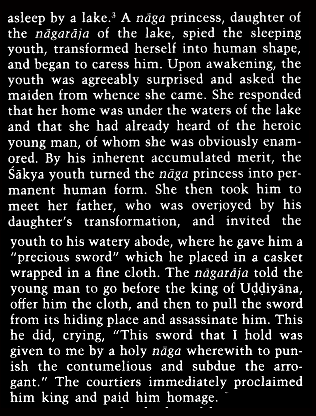
I'm not sure what you mean, i only know the titles from antiquity which it has taken me years to figure out, she has no modern representation within the establishment and any who would claim such are Deist nincompoops, as far as any New world order goes she's their ultimate nightmare, she has her own mind, the yang within the yin.
Having said that Naga can take human form,

originally posted by: Kantzveldt
a reply to: Marduk
Sometimes it is dragons sometimes serpents, which the Naga tended to be seen as, there is of course a difference and the ones with serpents were perhaps produced by those who didn't believe in dragons which i think predates the later serpent representations, also given actual serpent cults perhaps confusion.
There is a belief I heard from India, that snakes, get bigger and bigger until they become Dragons. But Dragon mythology certainly didn't start in a land locked area, because all the earliest dragons are aquatic. Whether that's in the sea itself, or in the sky which was generally believed to have been water. The stories told about them were adapted as the cultures concerned stopped relying on maritime food sources and moved inland to farm. i.e. Dragons gained legs as a direct response to the people becoming unfamiliar with the sea and the creatures therein,
originally posted by: Kantzveldt
a reply to: Byrd
What i was basing the Sumerian connection on was a quite common epitaph of Dumuzid as Ama-ucumgal-ana, which literally translates as Mother-Dragon-Heaven (Feminine Ana), a very close association between his Kingship and the Mother Dragon.
ušumgal translates directly as large snake.
mušhuš was more commonly used for dragon, Tiamat is often referenced as one
edit on 17-11-2015 by Marduk because: (no reason given)
a reply to: Marduk
That's true enough, i figure the European tradition to have started with the Vinca and that was Danube culture, am ancestral Goddess related to the river among other things, Vinca culture did translate to the Ukrainian steppe, and seemingly Danube script to Uruk, as well as Dragons, Bbut then again she's strongly related to the Bosporus and Black sea region.
ušumga meaning great serpent as you pointed out could relate to a dragon, a very large serpent, they have seemingly all known instances of the phrase here which is a good resource., mušhuš is more commonly used but Ningishzida also was associated with the ušumga and understood to have Dragon qualities.
You should not say to Ningishzida: "Let me live!"...Sumerian Proverb
That's true enough, i figure the European tradition to have started with the Vinca and that was Danube culture, am ancestral Goddess related to the river among other things, Vinca culture did translate to the Ukrainian steppe, and seemingly Danube script to Uruk, as well as Dragons, Bbut then again she's strongly related to the Bosporus and Black sea region.
ušumga meaning great serpent as you pointed out could relate to a dragon, a very large serpent, they have seemingly all known instances of the phrase here which is a good resource., mušhuš is more commonly used but Ningishzida also was associated with the ušumga and understood to have Dragon qualities.
You should not say to Ningishzida: "Let me live!"...Sumerian Proverb
edit on Kpm1130320vAmerica/ChicagoTuesday1730 by Kantzveldt because: (no reason given)
new topics
-
Bizarre Labour Party Tic Toc Video Becomes Even More Embarrassing
Regional Politics: 19 minutes ago -
Potter to WHU
World Sports: 6 hours ago -
Dr. Demento
Music: 7 hours ago -
The elephant in the room (wearing a hoodie)
US Political Madness: 7 hours ago
top topics
-
The elephant in the room (wearing a hoodie)
US Political Madness: 7 hours ago, 14 flags -
To become president, Zelensky had to learn Ukrainian
Political Conspiracies: 14 hours ago, 8 flags -
Dr. Demento
Music: 7 hours ago, 6 flags -
Potter to WHU
World Sports: 6 hours ago, 2 flags -
Bizarre Labour Party Tic Toc Video Becomes Even More Embarrassing
Regional Politics: 19 minutes ago, 2 flags
active topics
-
Bizarre Labour Party Tic Toc Video Becomes Even More Embarrassing
Regional Politics • 1 • : chiefsmom -
President Carter has passed
Mainstream News • 49 • : Oldcarpy2 -
Los Angeles brush fires latest: 2 blazes threaten structures, prompt evacuations
Mainstream News • 189 • : xuenchen -
The Fight for Election Integrity Continues -- Audits, Criminal Investigations, Legislative Reform
2024 Elections • 4372 • : IndieA -
What Comes After January 20th
Mainstream News • 35 • : JadedGhost -
Potter to WHU
World Sports • 3 • : gortex -
The Truth about Migrant Crime in Britain.
Social Issues and Civil Unrest • 42 • : gortex -
Post A Funny (T&C Friendly) Pic Part IV: The LOL awakens!
General Chit Chat • 8007 • : underpass61 -
Planned Civil War In Britain May Be Triggered Soon
Social Issues and Civil Unrest • 29 • : AdultMaleHumanUK -
The elephant in the room (wearing a hoodie)
US Political Madness • 19 • : xuenchen
